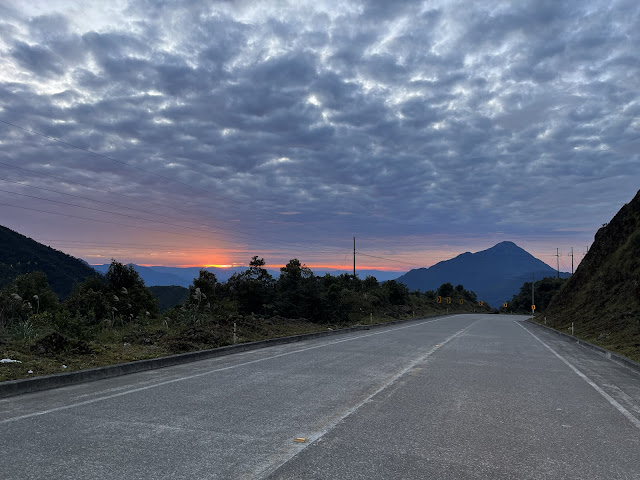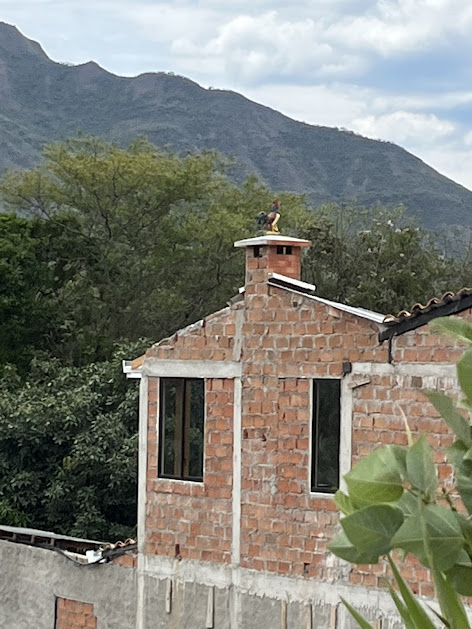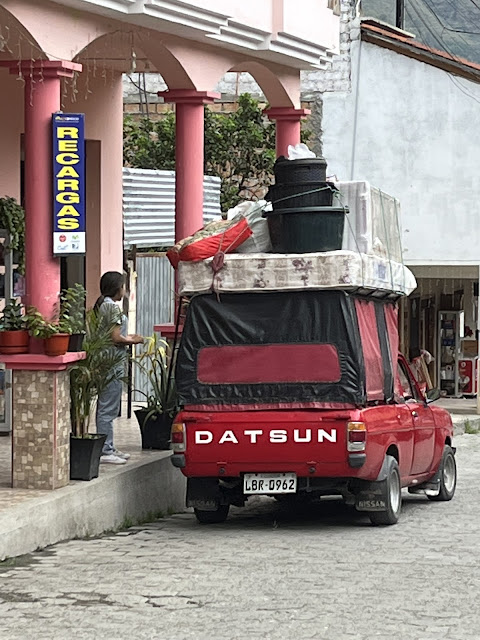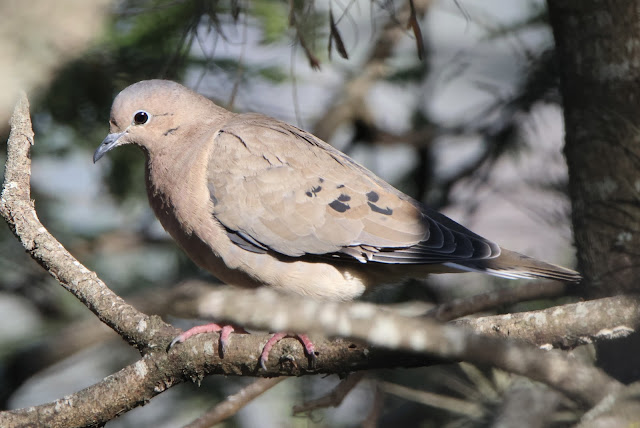Nov 28, 2022. We set the alarm for 4:30. Rosie slept right through it, so I had to wake her up. We needed to be ready for Hernan out front at 5:00 as we were going to the Reserva Tapichalaca, south of Vilcabamba an hours drive. The reserve sits at about 6,000 feet in a cloud forest. But first a little history.
In 1997 a researcher/ornithologist named Robert Ridgely was doing some field work in a basically unexplored area in Southern Ecuador and heard a bird song he was not familiar with. He recorded it, played it back, and then the Jocotoco Antpitta came out to see the competition, and a new species was added to science. Apparently the local farmers were aware of it and called it “Jocotoco.” The next year arrangements were made to purchase the land, and the following year an official reserve was formed, the first of what has come under the management of the Jocotoco Foundation, which is now responsible for overseeing and protecting a number of such reserves in Ecuador.
It was dark most of the drive to the reserve, but we were able to see the crack of dawn.
After we left the small town of Yangana, finding a straight stretch of road was rare. And occasionally the concrete was gone so the road became rather rough once in a while. At one point we drove through a creek, something one might not expect on THE most major road through Southern Ecuador. But there were signs of bridge construction, so at least this part of the road would soon be repaired.
We finally arrived at the entrance and met with Romero, who would be our guide.
While we were waiting, a pair of Beared Guans were very obliging for my camera.
Hummers were getting their morning sugar fix at the feeders - Collared Incas, Chestnut-bellied Coronets, Amethyst and Little Sunangels, Fawn-breasted Brilliants, and later on a Spotted Hummingbird.
Amethyst-throated Sunangel
Soon after embarking on the trail, Romero asked us to wait while he coaxed a Rufous-Naped Antpitta into view to eat some worms.
Rufous-naped AntpittaA little farther down the trail we heard it - the famed Jocotoco Antpitta. It took Romero about 5 minutes of coaxing, but he finally came into view. Later on another one showed as we were nearing a feeding station, and the light was much better for photography. They really gobbled up the worms Ramiro put out for them.
We ended up walking the trail which encircles a mountain, and my pedometer indicated we did 4.5 miles and some 15 flights of stairs. The scenery was great. I was really afraid it would be a wet day. Every time I woke up the night before and looked outside, I did not see stars. But it was actually quite pleasant, and we ended up shedding the few layers we’d thought we’d need.
Much of the time the birding was difficult. This kind of forest is soooo thick, and for most of the time you are on a hillside, so any birds above you were really hard to get on. If they were below you it was easier. Here are some shots of the scenery and the birds.
THIS WAS THE ROAD BEYOND THE RESERVE AND YOU CAN SEE THE TOWN OF VALLADOLID WAY OUT THERE. THIS IS WHY YOU COULD HEAR THE BUS COMING A FEW MILES AWAY.
ORCHIDS
A RUFOUS SPINETAIL WITH A JUICY SPIDER, OR WALKING STICK?
ROSIE, ME AND ROMERO IN THE BACK - SOMEWHERE ALONG THE TRAIL.
HERE WE ARE AGAIN AFTER WE’D SHED SOME CLOTHES
ANOTHER VIEW OF THE ROAD BELOW
A COLLARED INCO SCRATCHING HIS CHIN
A BLACK-CAPPED HEMISPINGUS
A HONEY BEE HIVE. HONEY IN SPANISH IS “MIEL.”
A GRASS-GREEN TANAGER
We had arrived there just after 6:00 and completed the loop about 10:00, which ended at the highway above the entrance, so it took about 10 minutes to reach the lodge where we had breakfast. I was itching to get back out there, and Rosie conceded to join me, but turned around shortly because of the steepness of the trail Romero recommended. By now it was getting hot and I only ran into one mixed flock. I tooted like a Pygmy Owl in order to get the birds riled up, and was able to add a few more to the list. I ended up with 44 species, but the potential was certainly double that. Nine new lifers and about 30 new ones for the trip so far. When it was all said and done, I had taken 829 pictures today. That was a lot to go through.
Rosie learned that the bus came by about 2:00 and 3:00. It was almost 2:00 and we could hear a large vehicle coming up the road. I’d say you could hear a large vehicle 3-4 miles away under the circumstances. So we made haste and got to the road in time to see a bus coming our way, so we flagged it down (a normal procedure here), hopped on and were happy to be on our way. The attendant came by and tried her best to explain I needed $3.00 for both of us, just the coinage I luckily had.
It would an hour and twenty minutes to get to Vilcabamba, and what a ride it was. The bus had to have been 25+ years old. When we hit the gravel parts it sounded like a demolition zone. We sat in the back on the side which overlooked downhill. We were not able to see most of this getting to the reserve. The views were splendid, and the road was really windy. It was slow going uphill and not much faster downhill. Good thing the brakes worked well. Simply put, it was LOUD. We were glad to get to Vilcabamba and disembark.
On the back of the seats in front of us were these engravings. We’ll let you figure it out.

















































































